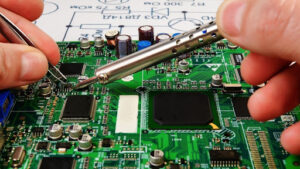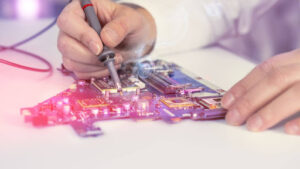Join us as we delve deeper into the realm of consumer electronics, exploring its vast landscape, key players, and the technology that drives it. We’ll also shed light on how these devices have evolved over the years and what the future holds for this dynamic industry.
What are Consumer Electronics
Unfolding the concept of consumer electronics, one understands these to be electronic equipment intended for daily use, predominantly in private households. They revolve around categories such as entertainment, communication and productivity. Televisions, DVD players, laptops, digital cameras, microwave ovens, cellphone – all fall within this sector.

Let’s delve deeper into these categories.
- Entertainment devices make leisure time enjoyable. Examples of such gadgets include gaming consoles like Xbox and PlayStation, and media devices, such as DVD Blu-ray players & Smart TVs.
- Communication refers to devices enabling connectivity and interaction. In this consideration, smartphones, such as Samsung Galaxy or iPhone, landline phones and fax machines are illustrative.
- Productivity gadgets enhance efficiency in tasks, whether professional or personal. Under this umbrella, one finds equipment like personal computers, printers, external hard drives, and other related computer accessories.
Examination of consumer electronics can’t be complete without discussing their manufacturing. The consumer electronics industry includes enterprises producing these devices. The sector incorporates giants such as Apple, Samsung, Sony, and Microsoft. Each of these companies, with their innovation and technology, are contributing significantly to the consumer electronics landscape.
Types of Consumer Electronics
Broadly defined, consumer electronics fall into three primary categories, specifically designed to facilitate various aspects of daily life. Understanding these categories, and the types of products found within them, aids in effectively identifying and selecting suitable electronic devices.
Entertainment Devices

Most consumer electronics are classified as entertainment devices. These include televisions, music systems, gaming consoles, and Blu-ray players. For instance, in the gaming industry, Microsoft’s Xbox Series X and Sony’s PlayStation 5 serve as prime examples of high-end gaming systems. They’re designed to deliver immersive experiences to users, revolutionising the way people interact with virtual environments.
Communication Devices
Another robust category, communication devices, principally focuses on connecting people. These devices encompass smartphones, tablets, and smartwatches. A typical example represents the iPhone series from Apple, a company renowned for its cutting-edge technology. Its smartphone models integrate voice and video calling, translating, entertainment, and many more into a single compact gadget.
How Consumer Electronics Work
Consumer electronics function on a complex yet fascinating network of internal components. Electronics consist of individual electrical circuits. Circuits control the flow of electric current through various electronic components, such as resistors, capacitors, inductors, and semiconductor devices. For simplification, consider a smartphone—an exemplar of consumer electronics.
In this device, the central processing unit (CPU) takes centre stage. It acts as the device’s brain, executing instructions from the device’s software. These orchestrations demand considerable control and coordination. For instance, when making a phone call, the CPU directs the microphone to capture the voice, converts it into digital data, and sends it through the telecommunication network.
Another component handling significant roles is memory. It includes both volatile and non-volatile types. Volatile memory, like the Random Access Memory (RAM), empowers tasks by storing temporary data during operations. On the other hand, non-volatile memory, like the Read-Only Memory (ROM), retains information even without power, keeping essential application software and firmware.
Furthermore, display technology presents information visually to users. With evolving technologies, display screens have transitioned from cathode-ray tubes to advanced LED, plasma, and OLED displays. For example, the screen of Samsung’s Galaxy smartphones, renowned for vibrant colours and deep blacks, utilises OLED technology.
